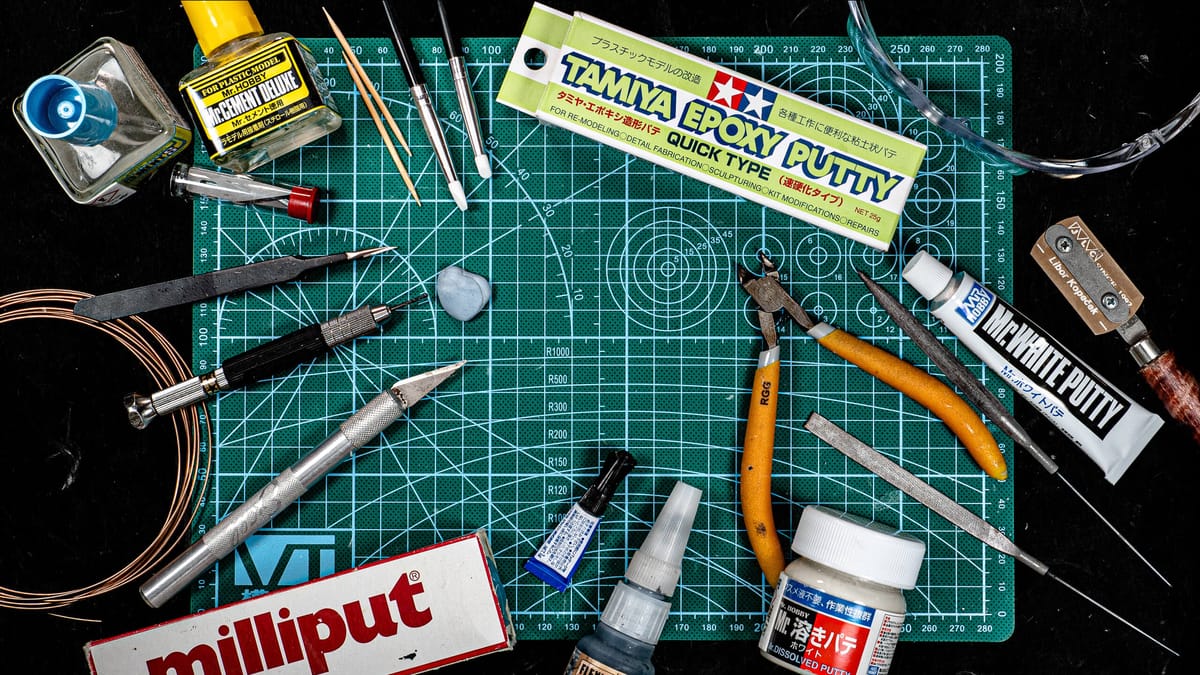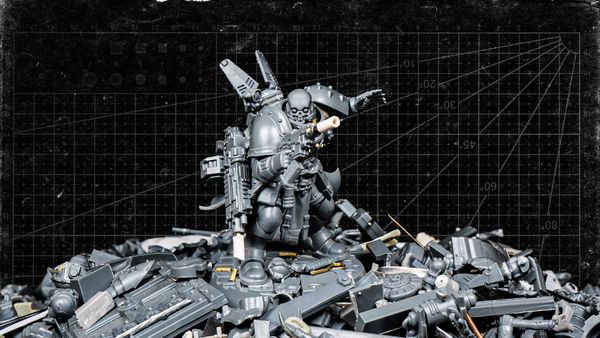Tools of the Trade: Kitbashing Essentials
Looking to get started with kitbashing? Choosing the right tools can be a real head-scratcher. Fortunately this guide is here to help you get the hang of it, whether you’re new to this or just on the look-out for equipment recommendations.

Getting started
Ready to roll up your sleeves and learn the ropes of kitbashing? First, you’ll need to gather the right tools. The wide range of options to choose from can be overwhelming—especially if you’ve never done this before. Calling upon my own experience, I have designed this series of comprehensive textbooks to help beginners make sense of things and get started in the best conditions. So without further ado, let’s take a closer look at bashing supplies!
In the first part of this guide we’ll go over the essential tools for cutting, trimming and drilling your way to custom miniatures. We’ll then examine the best options for gluing plastic and resin. Additionally, we’ll review sculpting, gap-filling, and sanding tools. Lastly, we’ll be looking into raw materials commonly used to further detail and customize projects, without forgetting the indispensable protective gear needed to work in safe conditions.





